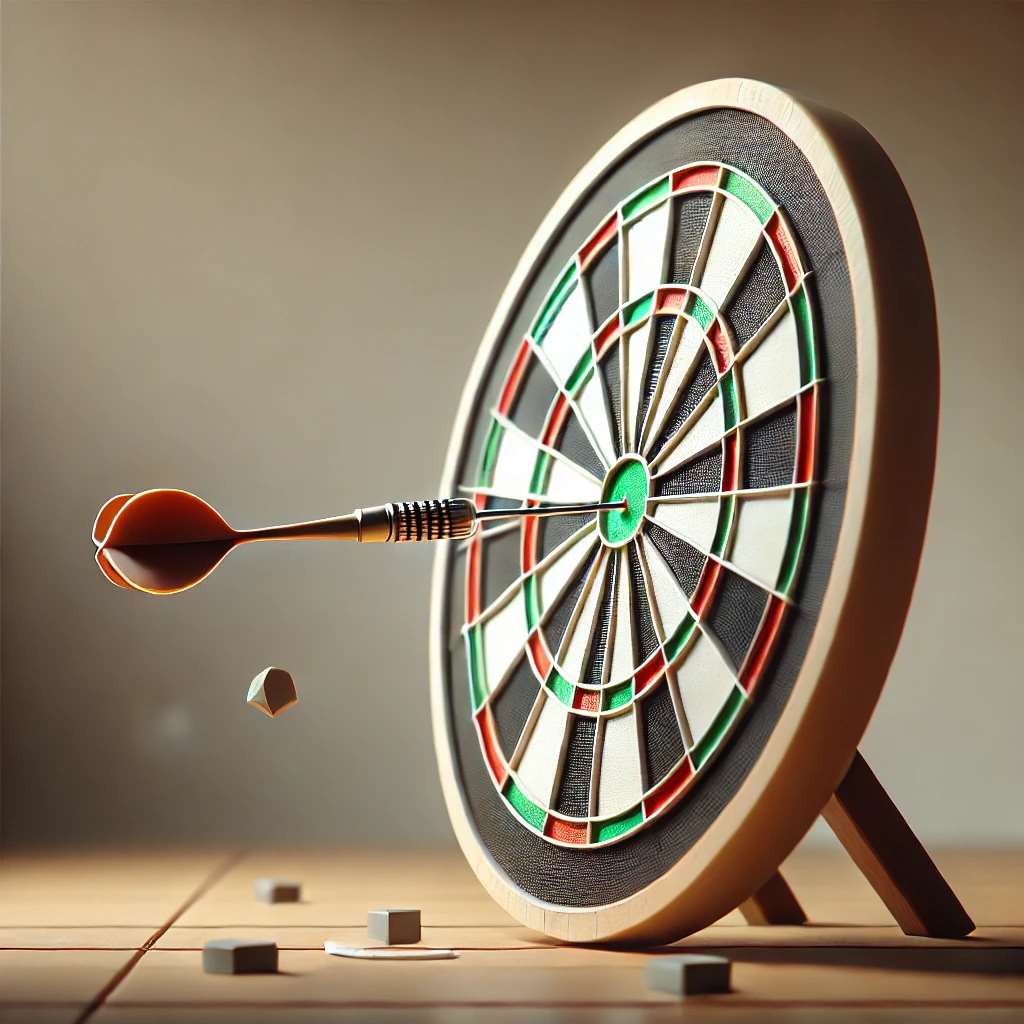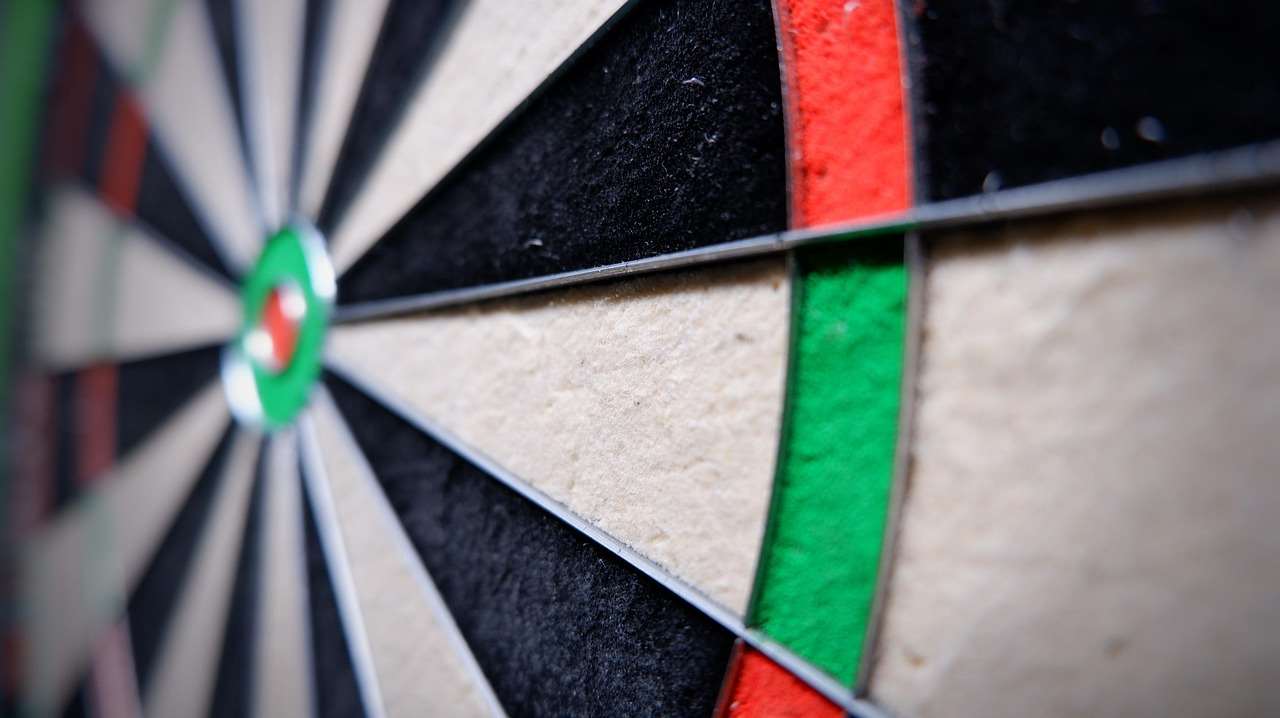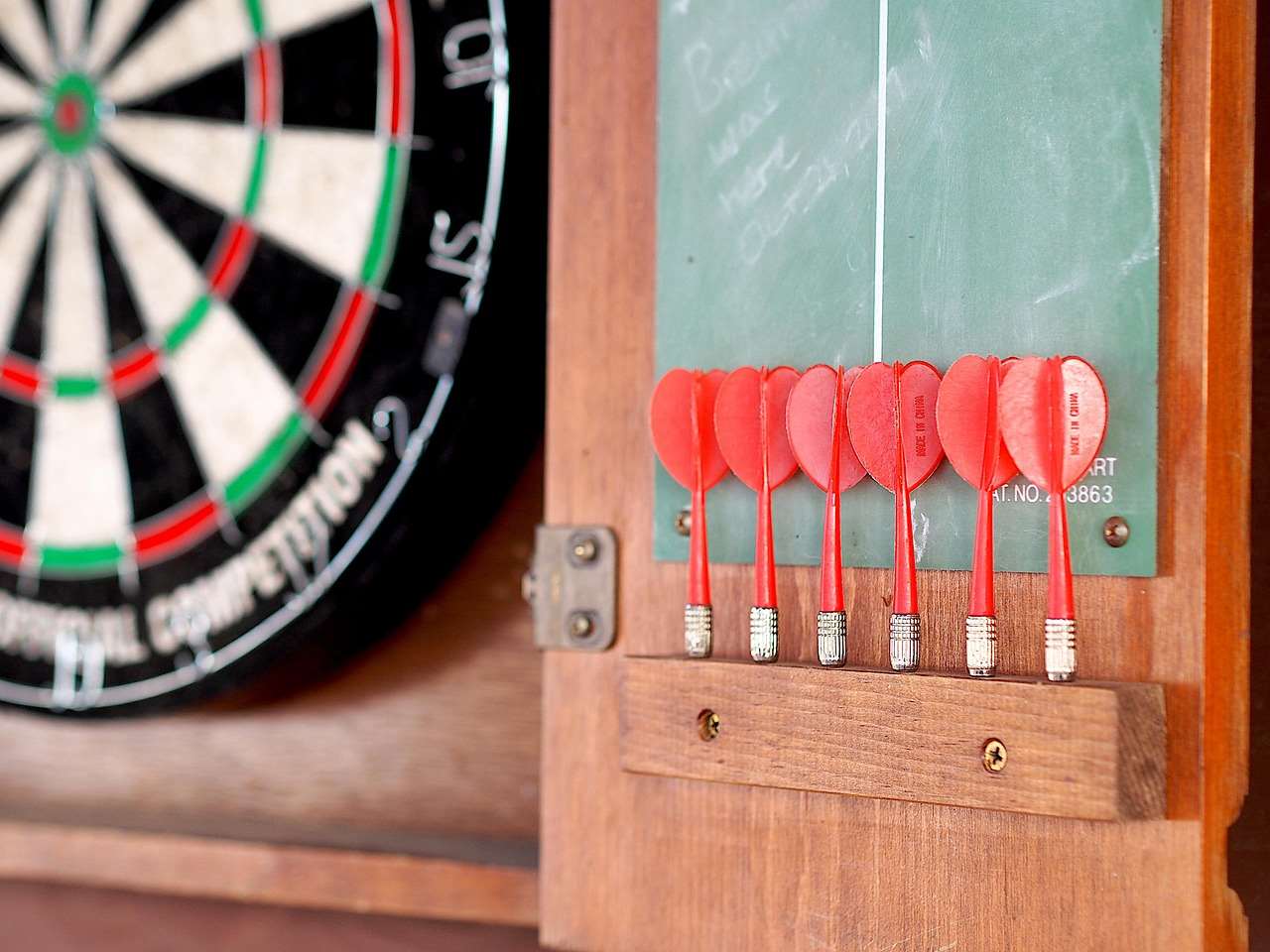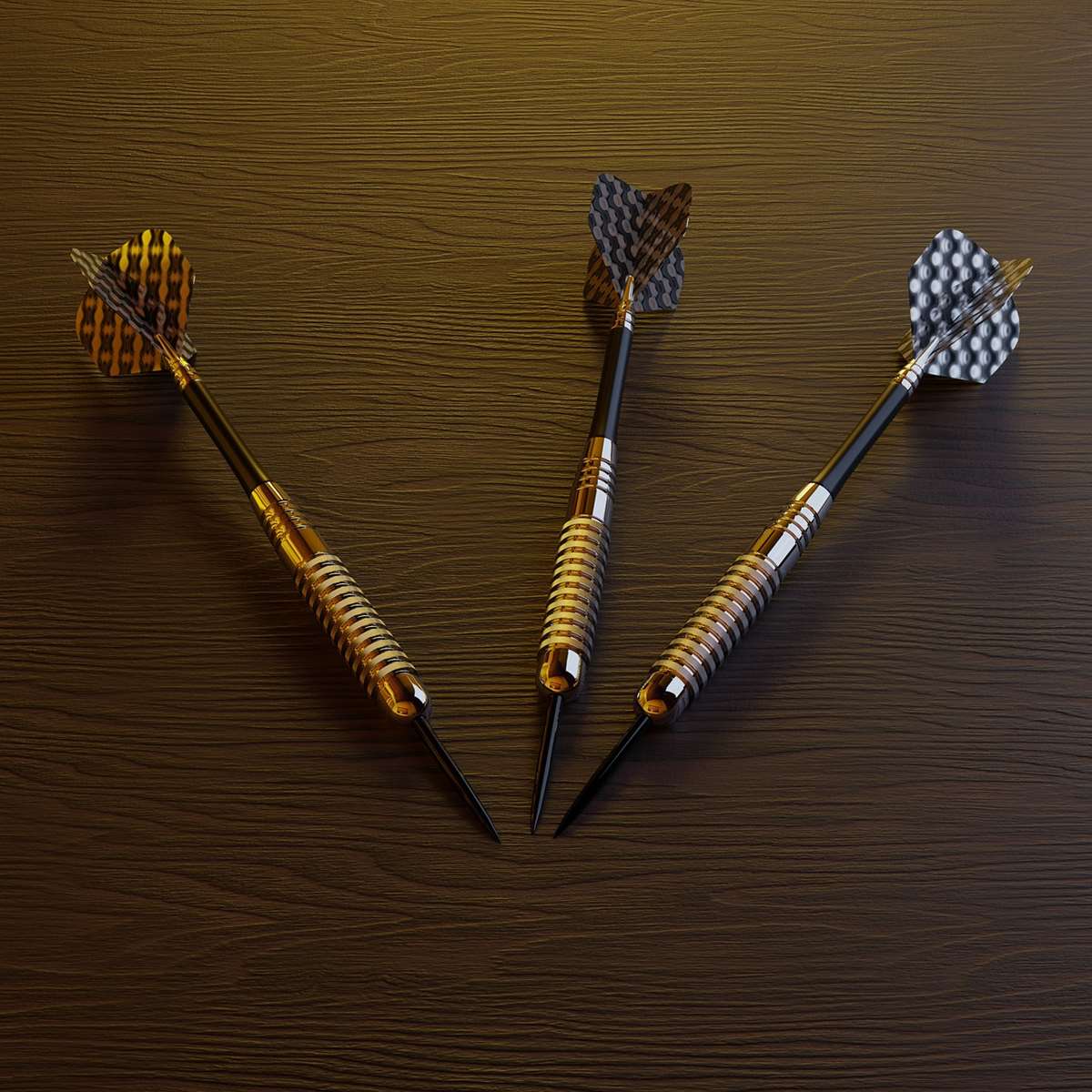Taking your local **pub darts** game to a more competitive level involves strategy, dedication, and a bit of know-how; this article outlines the key steps to elevate your game from casual throws to organized **Pub Darts For Competition**. We’ll explore everything from improving your technique and choosing the right equipment to finding local leagues and tournaments, ensuring you’re ready to step up to the oche and compete.
⚠️ Still Using Pen & Paper (or a Chalkboard)?! ⚠️
Step into the future! The Dart Counter App handles all the scoring, suggests checkouts, and tracks your stats automatically. It's easier than you think!
Try the Smart Dart Counter App FREE!Ready for an upgrade? Click above!
From Pub Game to Competition: Getting Started with Pub Darts For Competition
Many dart players start in pubs, enjoying casual games with friends. However, transitioning to **Pub Darts For Competition** requires a different mindset and approach. It’s about moving beyond the social aspect and embracing the challenge of improving your skills and competing against other players.
Assessing Your Current Skill Level
Before diving into competition, honestly assess your current skills. Can you consistently hit the board? Are you familiar with the basic rules of 501 and Cricket? Understanding your strengths and weaknesses will help you focus your training efforts. You might consider filming yourself throwing to analyze your technique or tracking your scores to monitor your progress. Consider the **average player** at your local pub, are you better, worse, or the same?
Setting Realistic Goals
Don’t expect to become a professional overnight. Set small, achievable goals. For example, aim to increase your average score by 5 points per week, or to consistently hit a certain number of doubles per game. These small wins will keep you motivated and on track. Consider joining a **practice league** to gauge progress.

Choosing the Right Equipment for Competitive Darts
While skill is paramount, having the right equipment can significantly impact your performance. The dart itself is the most critical piece, but other factors like the board and oche (throw line) setup are also important. Having your own equipment ensures familiarity and consistency.
Dart Weight and Material
Experiment with different dart weights to find what feels most comfortable for you. Heavier darts (24-26 grams) are often preferred by beginners as they tend to fly straighter, while more experienced players might prefer lighter darts (20-23 grams) for greater control. Dart materials also vary. Tungsten darts are denser, allowing for slimmer barrels, which can reduce deflections and increase scoring potential. Brass darts are less expensive but bulkier. Consider reading a **darts review** online to see what is popular.
Dart Shafts and Flights
The length and material of your dart shafts and the shape and size of your flights affect the dart’s trajectory and stability. Shorter shafts generally result in a faster, flatter throw, while longer shafts provide more stability. Experiment with different combinations to find what works best for your throwing style. Flights come in various shapes, sizes, and materials; standard flights are a good starting point, but try different shapes to see how they affect your darts’ flight path. The shape and size of your flight can impact **dart aerodynamics**.

Dartboard and Oche Setup
Ensure your dartboard is regulation size (17 3/4 inches in diameter) and hung at the correct height (bullseye at 5 feet 8 inches from the floor). The oche should be 7 feet 9 1/4 inches from the face of the dartboard. A clearly marked oche is essential for consistent throws. Always use a **steel tip dart** on a bristle board, and soft tip darts on an electronic board.
Improving Your Dart Throwing Technique
Consistent technique is the cornerstone of competitive darts. It’s not about brute force, but about precision, control, and repeatability. Focus on developing a smooth, repeatable throwing motion.
Stance and Grip
Find a stance that feels comfortable and balanced. Most players stand sideways to the board, with their throwing shoulder facing the target. Experiment with different foot positions to find what gives you the best stability. Your grip should be firm enough to control the dart but not so tight that it restricts your movement. A three- or four-finger grip is common, but find what feels natural to you. Check that your **hand eye coordination** is good.
The Throwing Motion
The throwing motion should be smooth and fluid, starting with a controlled backswing and ending with a complete follow-through. Keep your elbow steady throughout the throw, and release the dart at the same point each time. Practice in front of a mirror to monitor your technique and identify any inconsistencies. Remember, **practice makes perfect**, so dedicate time each day to hone your skills.

Mental Game
Darts is as much a mental game as it is a physical one. Learn to control your emotions and stay focused under pressure. Develop a pre-throw routine to help you relax and concentrate. Visualize success and believe in your ability to hit the target. If you are thinking about something else other than the **darts target**, then you will miss.
Finding Pub Darts Competitions and Leagues
Once you’ve honed your skills, it’s time to put them to the test in competitive environments. Look for local pub leagues or tournaments in your area. These are great opportunities to gain experience, meet other players, and improve your game.
Local Pub Leagues
Many pubs host their own darts leagues, which are usually held weekly or bi-weekly. These leagues provide a friendly and competitive environment to test your skills and meet other players. Contact your local pubs to inquire about their league schedules and registration process. Ask around about **league rules** and schedules.
Darts Tournaments
Darts tournaments are often larger events that attract players from a wider area. These tournaments can be a great way to challenge yourself and compete against more experienced players. Check online resources or local darts organizations for information on upcoming tournaments. Consider Travel Tips For Darts Tournaments for tournaments further from home.

Joining a Darts Club
Joining a darts club can provide access to organized practice sessions, coaching, and competitive opportunities. Darts clubs often have established teams that compete in local leagues and tournaments. Search online for darts clubs in your area. Joining a club is a good way to meet other **dart players**.
Advanced Strategies for Pub Darts For Competition
To truly excel in **Pub Darts For Competition**, you need to develop advanced strategies beyond just aiming and throwing. This includes understanding scoring tactics, mastering checkouts, and learning to adapt to different opponents.
Scoring Tactics and Checkout Strategies
Knowing which numbers to target and how to set up checkouts is crucial for maximizing your score and winning games. Learn the most common checkout combinations and practice them until they become second nature. For example, if you have 170 left, the ideal checkout is T20, T20, Bullseye. Understanding scoring will improve your **dart throwing technique**.
Playing Under Pressure
The ability to perform well under pressure is a hallmark of a successful darts player. Practice throwing in simulated pressure situations, such as having someone watch you and critique your throws, or setting time limits for each throw. Learn to control your nerves and stay focused on the target. The Darts Culture And Community Guide is a good place to learn about the wider world of darts.

Analyzing Your Opponents
Pay attention to your opponents’ throwing styles, tendencies, and weaknesses. Are they strong on their treble 20s but weak on doubles? Do they tend to get nervous when under pressure? Use this information to your advantage by targeting their weaknesses and exploiting their vulnerabilities. You may be able to see their **darts grip** to get an idea of their level.
Maintaining Equipment and Continued Improvement
To maintain consistency and improve performance in **Pub Darts For Competition**, it’s important to take care of your equipment and continue learning and refining your skills. Here are some tips for equipment maintenance and continuous improvement.
Dart Maintenance
Clean your darts regularly to remove dirt and grime. Use a soft cloth and mild detergent. Check your dart points for burrs or sharpness, and sharpen them as needed. Replace worn or damaged shafts and flights. Proper maintenance will extend the life of your equipment and ensure consistent performance. Remember to replace **broken darts** as soon as possible.
Practice Routines and Drills
Establish a regular practice routine that focuses on specific skills, such as accuracy, checkout combinations, and mental toughness. Use drills to target your weaknesses and reinforce your strengths. For example, practice hitting specific numbers or checkout combinations repeatedly until you can consistently hit them under pressure. Consistent practice is essential for continued improvement.
Seeking Feedback and Coaching
Don’t be afraid to ask for feedback from other players or coaches. A fresh perspective can help you identify areas for improvement that you may not have noticed yourself. Consider hiring a darts coach to provide personalized instruction and guidance. Even professional players have coaches to help them refine their skills. The Atmosphere At Live Darts Matches can be a motivator to improve your game.
Conclusion
Elevating your game from casual pub darts to competitive play requires dedication, the right equipment, consistent practice, and a strategic approach. By focusing on improving your technique, choosing the appropriate equipment, finding local leagues and tournaments, and developing advanced strategies, you can transform yourself from a casual player into a formidable competitor in **Pub Darts For Competition**. Remember to maintain your equipment, seek feedback, and never stop learning. With persistence and passion, you can achieve your darts goals. Take the first step now: research local leagues, invest in quality darts, and commit to a regular practice schedule. Your journey to competitive darts success starts today!
Hi, I’m Dieter, and I created Dartcounter (Dartcounterapp.com). My motivation wasn’t being a darts expert – quite the opposite! When I first started playing, I loved the game but found keeping accurate scores and tracking stats difficult and distracting.
I figured I couldn’t be the only one struggling with this. So, I decided to build a solution: an easy-to-use application that everyone, no matter their experience level, could use to manage scoring effortlessly.
My goal for Dartcounter was simple: let the app handle the numbers – the scoring, the averages, the stats, even checkout suggestions – so players could focus purely on their throw and enjoying the game. It began as a way to solve my own beginner’s problem, and I’m thrilled it has grown into a helpful tool for the wider darts community.